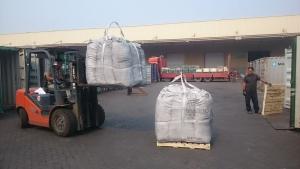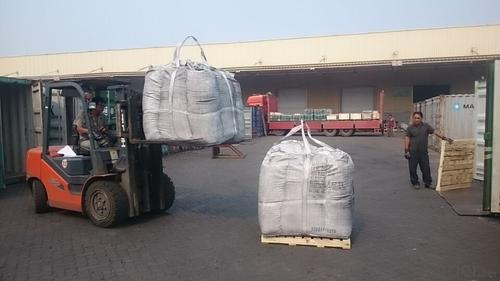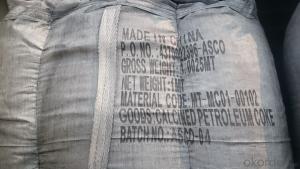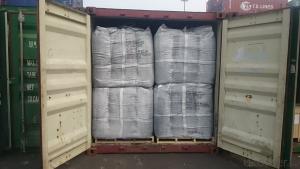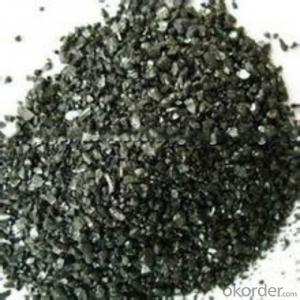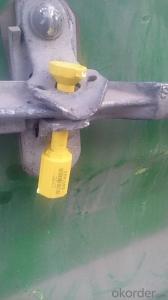GPC with lower Sulphur0.03% max in 1-5mm
- Loading Port:
- Tianjin
- Payment Terms:
- TT OR LC
- Min Order Qty:
- 20 m.t.
- Supply Capability:
- 5000 m.t./month
OKorder Service Pledge
OKorder Financial Service
You Might Also Like
Introduction:
GPC has good characteristics with low ash, low resistivity, low sulphur, high carbon and high density. It is the best material for high quality carbon products. It is used as carbon additive in steel industry or fuel.
Features:
1.Our strong team provide you reliable service that make you feel purchasing is more easier
2. We ensure that we can supply capability with competitive price.
3. Work strictly to guarantee product quality,
4. Highest standard of integrity. Guarantee customer's benefit.
5. Supplying Pet Coke, Met coke, Foundry Coke, Carbon Raiser etc.
Specifications:
F.C.% | 95MIN | 94MIN | 93MIN | 92MIN | 90MIN | 85MIN | 84MIN |
ASH % | 4MAX | 5MAX | 6 MAX | 6.5MAX | 8.5MAX | 12MAX | 13MAX |
V.M.% | 1 MAX | 1MAX | 1.0MAX | 1.5MAX | 1.5MAX | 3 MAX | 3 MAX |
SULFUR % | 0.3MAX | 0.3MAX | 0.3MAX | 0.35MAX | 0.35MAX | 0.5MAX | 0.5MAX |
MOISTURE % | 0.5MAX | 0.5MAX | 0.5MAX | 0.5MAX | 0.5MAX | 1MAX | 1MAX |
Pictures
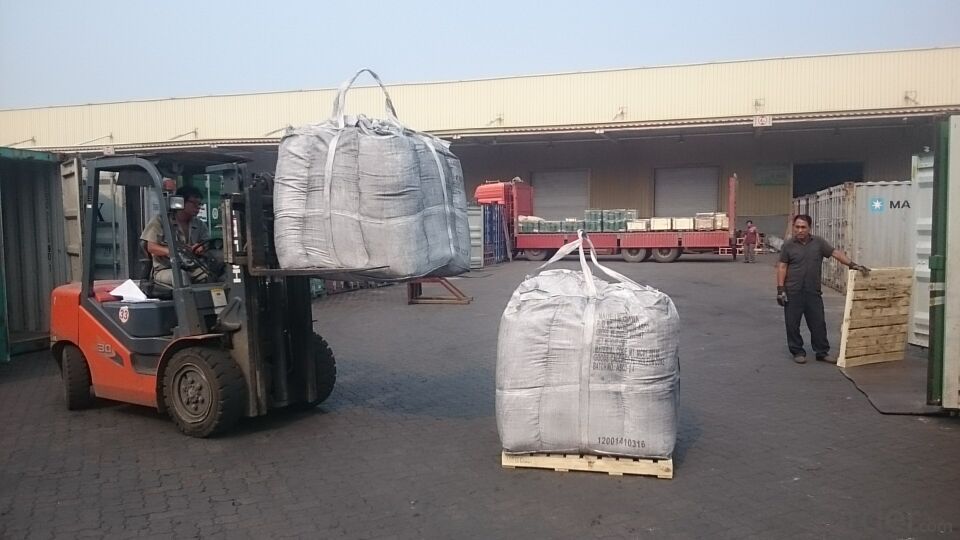
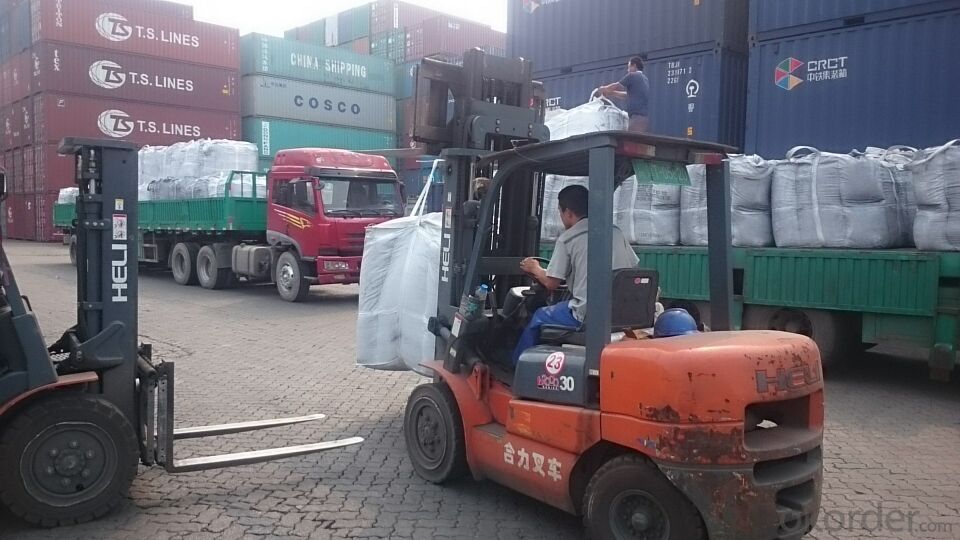
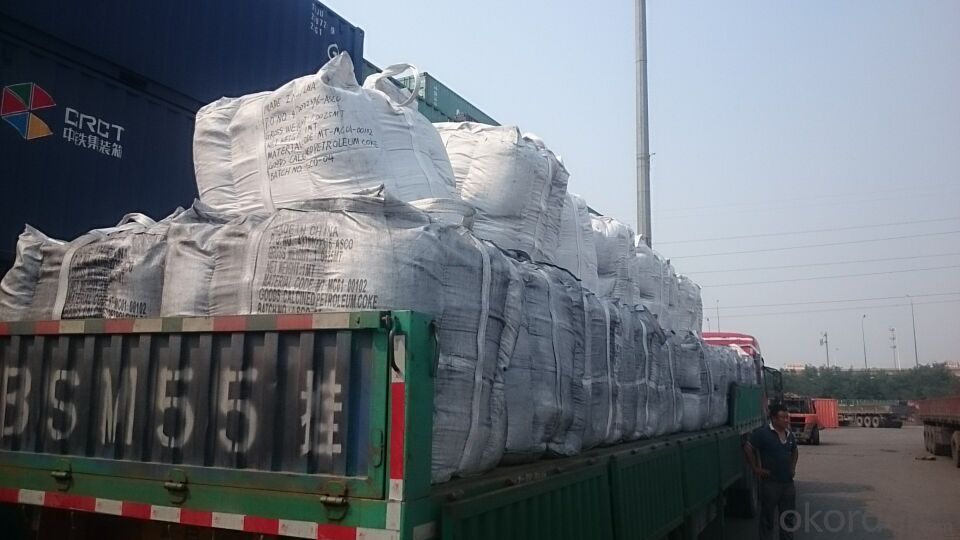
FAQ:
1. Your specification is not very suitable for us.
Please offer us specific indicators by TM or email. We will give you feedback as soon as possible.
2. When can I get the price?
We usually quote within 24 hours after getting your detailed requirements, like size, quantity etc. .
If it is an urgent order, you can call us directly.
3. Do you provide samples?
Yes, samples are available for you to check our quality.
Samples delivery time will be about 3-10 days.
4. What about the lead time for mass product?
The lead time is based on the quantity, about 7-15 days. For graphite product, apply Dual-use items license need about 15-20 working days.
5. What is your terms of delivery?
We accept FOB, CFR, CIF, EXW, etc. You can choose the most convenient way for you. Besides that,
we can also shipping by Air and Express.
6. Product packaging?
We are packed in bulk ship or in ton bag or placing in container or according to your requirements.
7. Notice
please note that the price on Alibaba is a rough price. The actual price will depends on raw materials, exchange rate wage and your order quantity .Hope to cooperation with you, thanks !
- Q: Why vegetarianism can reduce carbon emissions?
- This specific or calculated, and if you have done ISO14064, you should know that every year will be the carbon emissions statistics, the general is your year of all activities in accordance with the corresponding CO2 coefficients into CO2 equivalent;If you eat according to statistics, that is to calculate what you eat, how much CO2 is needed to produce;
- Q: Are carbon cells the same as alkaline batteries?
- Unlike, alkaline batteries are 4-5 times the capacity of carbon batteries, and the price is 1.5-2 times that of carbon.Carbon battery full name: neutral zinc manganese dioxide dry cell (zinc-manganese dry battery), belonging to the chemical source of the original battery, is a one-time battery. Because the chemical power unit has an electrolyte that is a non flowing paste, it is also called a dry cell, as opposed to a battery with a flowing electrolyte.
- Q: How is carbon used in the production of steel?
- The production of steel heavily relies on carbon as it directly impacts the characteristics and properties of the end product. Carbon is primarily used as an alloying element in the steelmaking process, where it is carefully added to modify the composition of the steel. The basic oxygen furnace (BOF) process is one of the most commonly employed methods for steel production. In this process, carbon is introduced to the molten iron to achieve the desired grade of steel. The quantity of carbon added determines the steel's mechanical properties, including hardness and strength. Generally, higher levels of carbon result in a harder and stronger steel. Another steelmaking process, known as the electric arc furnace (EAF) process, also utilizes carbon. In this process, recycled steel scrap is melted down using an electric arc to create new steel. Carbon is added during this stage to adjust the carbon content to meet the requirements of the desired steel grade. Moreover, carbon plays a critical role in the heat treatment of steel. Through techniques like carburizing and quenching, carbon is utilized to enhance the surface hardness and wear resistance of steel components. This is particularly vital in industries such as automotive, aerospace, and construction, where the durability and strength of steel are of utmost importance. To summarize, carbon is indispensable in the production of steel as it directly influences the mechanical properties and overall quality of the final product. From regulating the carbon content to controlling heat treatment processes, carbon serves as an essential component in the steelmaking industry.
- Q: What is carbon fiber reinforced polymer?
- Combining carbon fibers with a polymer matrix creates a composite material known as carbon fiber reinforced polymer (CFRP). This material is both strong and lightweight. Carbon fibers are thin and strong, consisting of carbon atoms bonded together in a crystalline structure. These fibers are integrated into a polymer matrix, typically made of epoxy resin, which serves to bind the fibers together and offer support. The resulting combination of carbon fibers and polymer matrix yields a material with a high strength-to-weight ratio, making it suitable for diverse applications. CFRP is recognized for its exceptional stiffness, strength, and resistance to corrosion and fatigue. It finds extensive use in aerospace, automotive, sports equipment, and other industries that require lightweight and high-performance materials. Due to its unique properties, CFRP presents an excellent alternative to conventional materials such as steel, aluminum, and fiberglass. It offers superior strength and durability while significantly reducing weight.
- Q: What is the impact of carbon emissions on agriculture?
- Carbon emissions have a significant impact on agriculture, affecting both crop production and livestock farming. One of the primary consequences of increased carbon emissions is climate change, which alters weather patterns and temperatures. These changes can disrupt the delicate balance required for successful agriculture. Rising temperatures caused by carbon emissions lead to increased evaporation, which can reduce soil moisture and hinder crop growth. Droughts become more frequent and severe, leading to water scarcity and decreased crop yields. Furthermore, extreme weather events such as floods, storms, and hurricanes become more frequent, causing extensive damage to crops and farmland. Another consequence of carbon emissions is the alteration of atmospheric composition. High levels of carbon dioxide (CO2) stimulate the growth of certain weeds and invasive species, which compete with crops for resources such as sunlight, water, and nutrients. This competition can lead to reduced crop yields and lower quality produce. Additionally, carbon emissions contribute to air pollution, including ozone formation. High levels of ozone can damage plant tissues and reduce photosynthesis, limiting crop productivity. Ozone also negatively affects the health of livestock, reducing their growth rates and milk production. The impact of carbon emissions on agriculture is not limited to crop production. Livestock farming is also affected, as changes in climate and temperature can impact animal health and productivity. Heat stress becomes a significant issue, leading to reduced fertility, lower milk yields, and increased susceptibility to diseases. Livestock also need access to adequate water and nutritious feed, which can become scarce due to droughts and increased competition for resources. Overall, carbon emissions have a detrimental impact on agriculture, affecting both crop production and livestock farming. Climate change, altered weather patterns, and increased competition for resources all contribute to reduced yields, lower quality produce, and decreased livestock productivity. Addressing and mitigating carbon emissions is crucial to ensure the sustainability and resilience of the agricultural sector in the face of these challenges.
- Q: I bought a grill myself and went to barbecue with my friends the day after tomorrow, but I can't ignite the carbon. What should I do?
- Is it barbecue in the field? If so, there are many ways to ignite carbon in the wild.The simplest, affordable way is to pile up the fire, and then use the charcoal on it, charcoal will be used after burning.At home, it is placed directly on the gas range, ignited.Charcoal direct ignition is not convenient, it is best to use other things as medium ignition.Be careful when you're in the barbecue. Watch out for the fire.
- Q: What are carbapenem antibiotics?
- Commodity name: Thai, times, speed, energy, spectrum, and G times Roarke Meiping Shu Ning
- Q: What are the main sources of carbon emissions?
- Human activities, particularly the burning of fossil fuels like coal, oil, and natural gas, are primarily attributed as the main sources of carbon emissions. When these fossil fuels are combusted for electricity generation, transportation, and industrial processes, significant amounts of carbon dioxide (CO2) are released into the atmosphere. Deforestation and land-use changes also play a major role in carbon emissions. Clearing or burning forests leads to the release of carbon stored in trees and vegetation as CO2, contributing to greenhouse gas emissions. Moreover, the decrease in forests reduces their ability to absorb carbon dioxide through photosynthesis, worsening the issue. Substantial carbon emissions are also generated by industrial processes such as cement production and chemical manufacturing. Cement production, in particular, produces a significant amount of CO2 due to the chemical reactions involved. Agriculture is another significant source of carbon emissions, primarily through the release of methane (CH4) and nitrous oxide (N2O). Livestock farming, especially cattle, produces methane through enteric fermentation and manure management. Nitrous oxide is released from the use of synthetic fertilizers and manure in agricultural practices. Lastly, waste management and disposal contribute to carbon emissions. Landfills, where organic waste decomposes, release methane gas. Additionally, the incineration of waste also releases CO2 and other greenhouse gases into the atmosphere. To reduce carbon emissions, it is vital to address these primary sources. This can be achieved through transitioning to cleaner energy sources, promoting sustainable land-use practices, improving industrial processes, adopting more sustainable agricultural practices, and implementing effective waste management strategies.
- Q: How does carbon impact the migration patterns of animals?
- Carbon emissions and climate change have significant impacts on the migration patterns of animals. The increased release of carbon dioxide in the atmosphere leads to global warming, which alters the timing and availability of critical resources necessary for migration, such as food and water. One of the most noticeable impacts of carbon emissions on animal migration is the alteration of seasonal patterns. As the climate warms, the timing of seasons changes, affecting the availability of food sources that animals rely on during migration. For instance, the earlier arrival of spring can result in a mismatch between the timing of migration and the availability of food, leading to negative consequences for the survival and reproduction of migratory species. Furthermore, climate change caused by carbon emissions affects the habitats and ecosystems that animals depend on during migration. Rising temperatures and changing precipitation patterns can lead to the loss or degradation of crucial habitats, such as wetlands or coastal areas, which serve as stopover points or breeding grounds for migratory animals. This loss of habitat can disrupt migration routes and cause changes in the distribution and abundance of species. In addition, carbon emissions contribute to the acidification of oceans, which has severe consequences for migratory species that rely on marine ecosystems. Acidification affects the availability of food and affects the reproductive success of marine species, leading to changes in migration patterns and population dynamics. Overall, the impact of carbon emissions on animal migration patterns is complex and multifaceted. It disrupts the delicate balance of ecosystems, altering the availability of resources and habitats that animals rely on during migration. Understanding these impacts is crucial for developing effective conservation strategies to mitigate the negative consequences of climate change on migratory species and maintain the integrity of their habitats.
- Q: How does carbon affect the acidity of oceans?
- Carbon dioxide (CO2) dissolves in seawater to form carbonic acid (H2CO3), which increases the concentration of hydrogen ions (H+) in the water, leading to ocean acidification. This decrease in pH affects marine life by hindering the ability of shell-forming organisms to build and maintain their shells, as well as impacting other vital biological processes.
Send your message to us
GPC with lower Sulphur0.03% max in 1-5mm
- Loading Port:
- Tianjin
- Payment Terms:
- TT OR LC
- Min Order Qty:
- 20 m.t.
- Supply Capability:
- 5000 m.t./month
OKorder Service Pledge
OKorder Financial Service
Similar products
Hot products
Hot Searches
